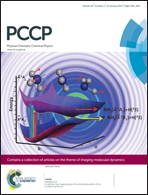Troika of single particle tracking programing: SNR enhancement, particle identification, and mapping†
Abstract
Single particle tracking (SPT) techniques provide a microscopic approach to probe in vivo and in vitro structure and reactions. Automatic analysis of SPT data with high efficiency and accuracy spurs the development of SPT algorithms. In this perspective, we review a range of available techniques used in SPT analysis programs. In addition, we present an example SPT program step-by-step to provide a guide so that researchers can use, modify, and/or write a SPT program for their own purposes.


 Please wait while we load your content...
Please wait while we load your content...